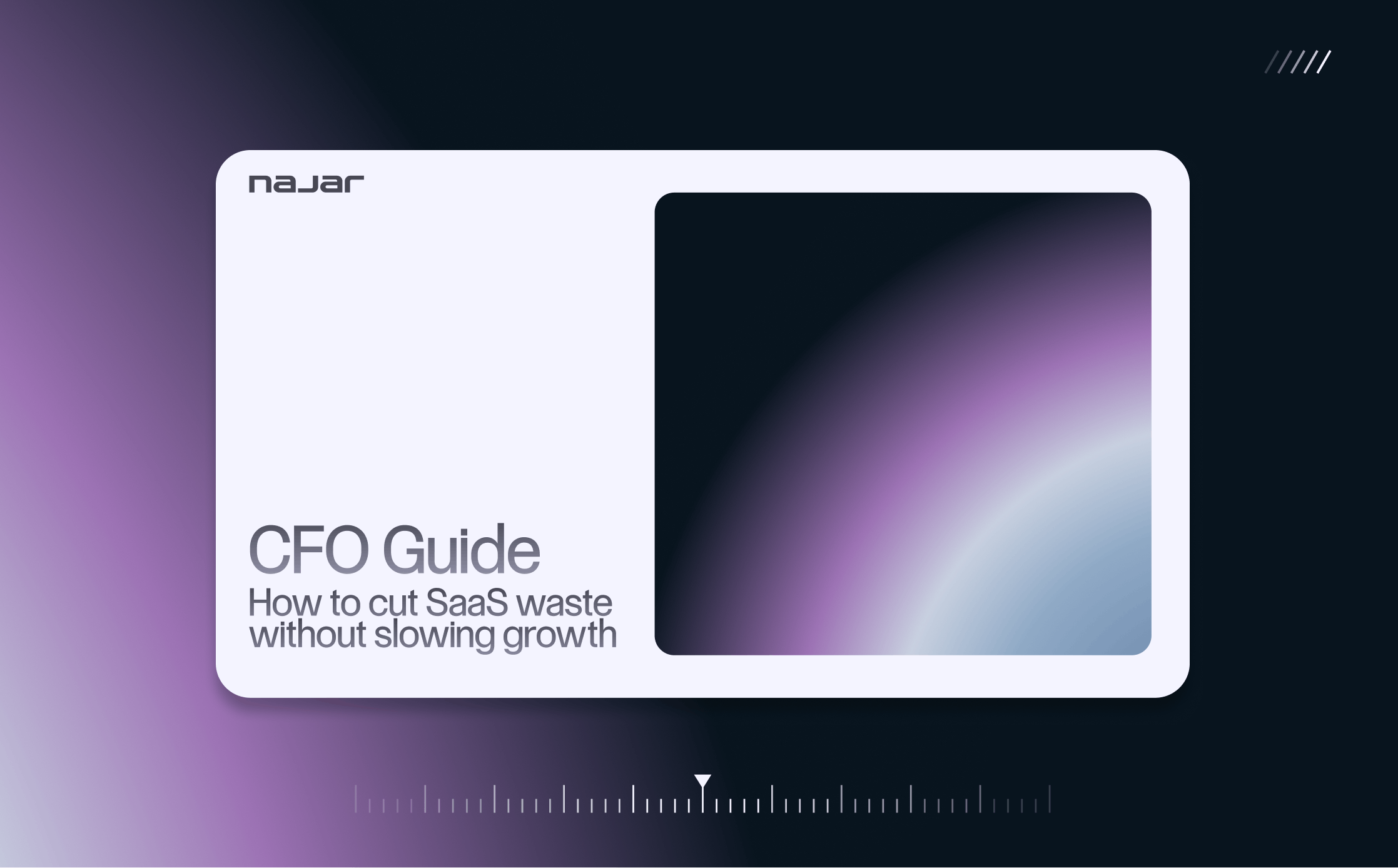Understanding the total cost of ownership of SaaS
SaaS tools are great for making your teams more efficient. On the other hand, they represent a cost to your business that shouldn't be overlooked. To calculate this cost effectively, it's a good idea to look at the Total Cost of Ownership (or TCO).
It is essential to evaluate not only the subscription fees, but also the additional costs associated with your software. It's by knowing the TCO that CFOs can make informed decisions. They can then optimize the ROI of your SaaS.
Discover our CFO's guide to everything you need to know about your TCO.
What is Total Cost of Ownership for SaaS tools?
TCO: definition
Bill Kirwin, analyst at Gartner, is the originator of the TCO concept. He defines it as "the total cost of acquiring, using, managing and retiring an asset over its entire life cycle". In our case, this asset refers to your SaaS software.
The SaaS Total Cost of Ownership covers all the costs associated with your solutions. In other words :
→ Subscription fees,
→ Number of active users,
→ Software licenses,
→ Etc.
How do I calculate the Total Cost of Ownership for SaaS?
You also need to take into account the costs of installing, implementing and customizing your tools.
Don't forget the cost of training your teams to master your solutions. Also take into account integration costs, which cover the manipulations required to synchronize your tools with the rest of your ecosystem. Finally, add support and maintenance costs (updates, etc.).
The adoption of SaaS solutions therefore has real financial implications. CFOs need to assess the Total Cost of Ownership (TCO) accurately and comprehensively to anticipate these expenses.
The importance of assessing the SaaS Total Cost of Ownership (TCO)
The Total Cost of Ownership (TCO) of your SaaS solutions is far more important than the simple subscription fee.
Before making any decisions to purchase new software, it's crucial to assess the TCO correctly, otherwise you could end up with unpleasant surprises.
Even if a SaaS has very low subscription fees, watch out for upgrades and additional paid features! After several months, you could find yourself swamped by avoidable expenses.
Calculate your TCO to invest in your growth
Resources spent on SaaS software are not invested in your business. So, by taking into account the hidden costs of your various solutions, you can put the money saved to good use in growing your business.
TCO as a bargaining chip with your suppliers
Knowing the TCO of your SaaS tools represents an additional bargaining chip. In fact, by highlighting all the costs represented by your software, you'll be able to put forward your arguments in favor of a more advantageous price.
Let's take the example of a supplier offering you substantial subscription fees for a solution that isn't entirely suited to your business. If your analysis shows that customization costs are high, you can negotiate a lower price.
Factors impacting SaaS TCO
Some SaaS solutions have a much higher Total Cost of Ownership than others. You can anticipate this by observing a few key factors that influence these costs.
For example, software that is very complex to install and integrate into your ecosystem is likely to have a high implementation cost. If these SaaS applications are also difficult to get to grips with, be sure to anticipate the cost (and duration) of training.
Some tools will also require a high level of customization to be fully adapted to your business. It's sometimes a good idea to purchase a specialized solution for your business sector to avoid this kind of inconvenience.
Strategies for optimizing SaaS costs
SaaS costs are by no means set in stone.
CFOs have many resources at their disposal for optimizing the costs associated with your SaaS ecosystem. Here are a few ways you can boost your company's financial efficiency.
Consolidate redundant tools
Some tools have redundant functionalities. For example, appointment scheduling software and a connected calendar both allow you to send video invitations to meetings.
It's important to carry out a detailed analysis of each tool to identify duplicate functionalities.
You'll then be able to eliminate certain functionalities, or even certain tools that are ultimately unnecessary. This automatically saves costs.
Redundant SaaS tools not only mean avoidable costs, but also inconvenience for your teams.
If you'd like to find out more, take a look at our article on SaaS overlaps to discover our tips for identifying and resolving them.
Renegotiating SaaS contracts
As we saw earlier, it's crucial for your CFOs to have the Total Cost of Ownership of your tools in mind. That's how they can more easily engage in price negotiations with your suppliers.
SaaS contracts are usually open-ended. It's therefore a good idea to negotiate lower rates, tools with a higher level of customization but at a lower cost, or an advantageous package on maintenance costs, among other things.
In addition, if your business is growing, you can negotiate a volume discount. The more users you have of your SaaS solutions, the more you'll be able to get a competitive price. To achieve this, you need to ensure that your tools are used by your teams.
Improving SaaS software utilization rates
To maximize your investment in SaaS solutions, it's essential to optimize their use by your staff. This means ensuring that as many people as possible are using all your software's functionalities.
Comprehensive, applied training ensures that your teams get to grips with the software quickly and efficiently. It's the best way to ensure that they understand the benefits of each feature, so that they can make the most of them.
Make informed decisions based on data
The use of your SaaS tools generates a substantial volume of data, which should not be overlooked. This data deserves to be analyzed in depth, to help you manage your ecosystem.
However, you may find the use of your usage data too technical. Don't hesitate to call on service providers like Najar to help you see things more clearly. At Najar, we help you optimize your SaaS software network so that it's 100% adapted to your business.
Want to find out more?Take a look at our Savings Calculator and discover how much you can save by effectively managing your SaaS solutions.
The Zenchef example
Zenchef is an all-in-one SaaS software solution that helps restaurants attract and retain customers. Najar helped Zenchef resolve several issues linked to their SaaS ecosystem, through analysis of the TCO of their various solutions.
Helping Zenchef negotiate with suppliers
The first challenge was negotiating with suppliers. Zenchef was allocating insufficient resources to discussions with its SaaS partners. Thanks to Najar's support, Zenchef was able to achieve an average savings of 25% per negotiation.
Optimizing Zenchef's SaaS ecosystem
The next step was to evaluate in detail the use of existing software. These were being used "blindly", without any knowledge of their actual usage rate among employees. This led to uncontrolled expenditure and difficulties in accounting for these costs.
By making the most of the data available with the help of Najar, Zenchef was able to eliminate certain unnecessary costs, caused by redundant functionalities in several software packages. It was therefore vital to carry out an in-depth study of employees' needs in order to select the right solutions.
Calculating the Total Cost of Ownership of your SaaS tools is far from superfluous. It sheds light on the overall consequences of using your solutions. By analyzing it in detail, you can make better choices.
Calculating the Total Cost of Ownership (TCO) of SaaS allows you to make substantial savings while maximizing the efficiency of your teams. A real asset for your CFOs.




